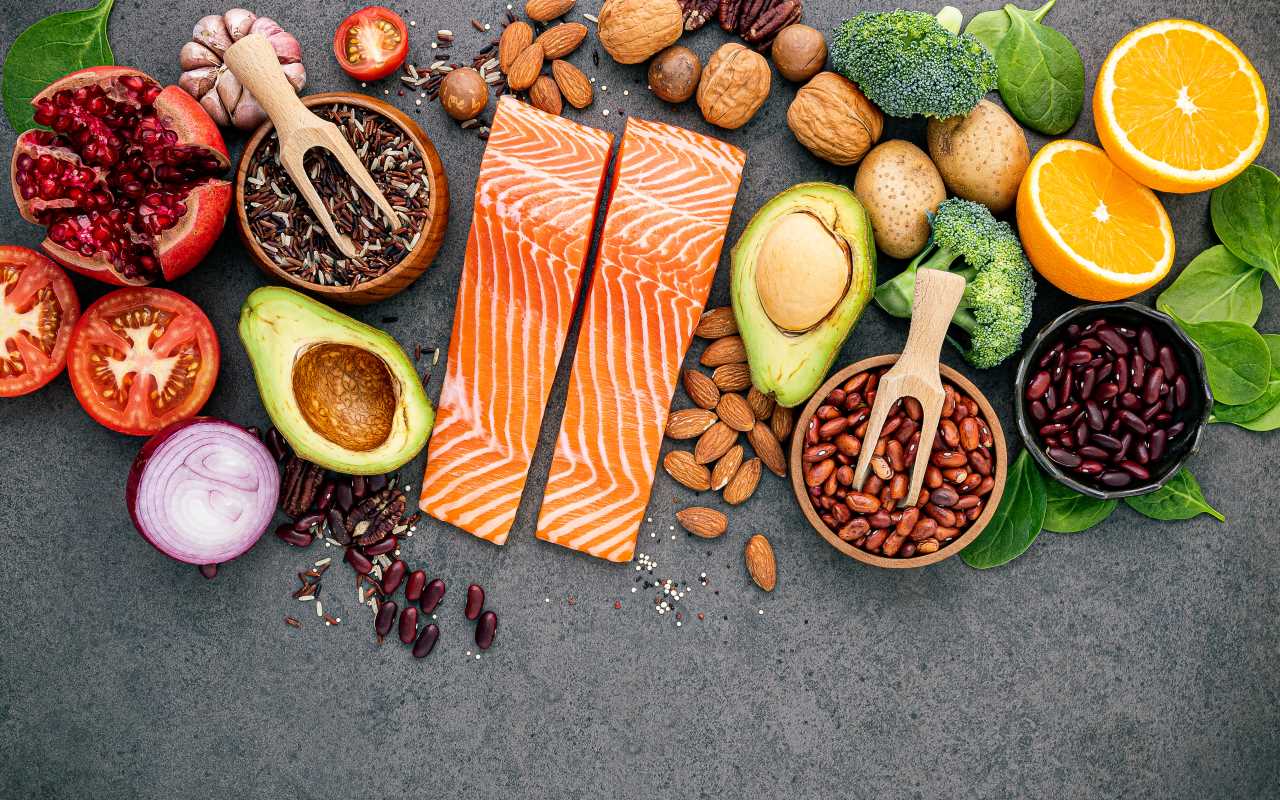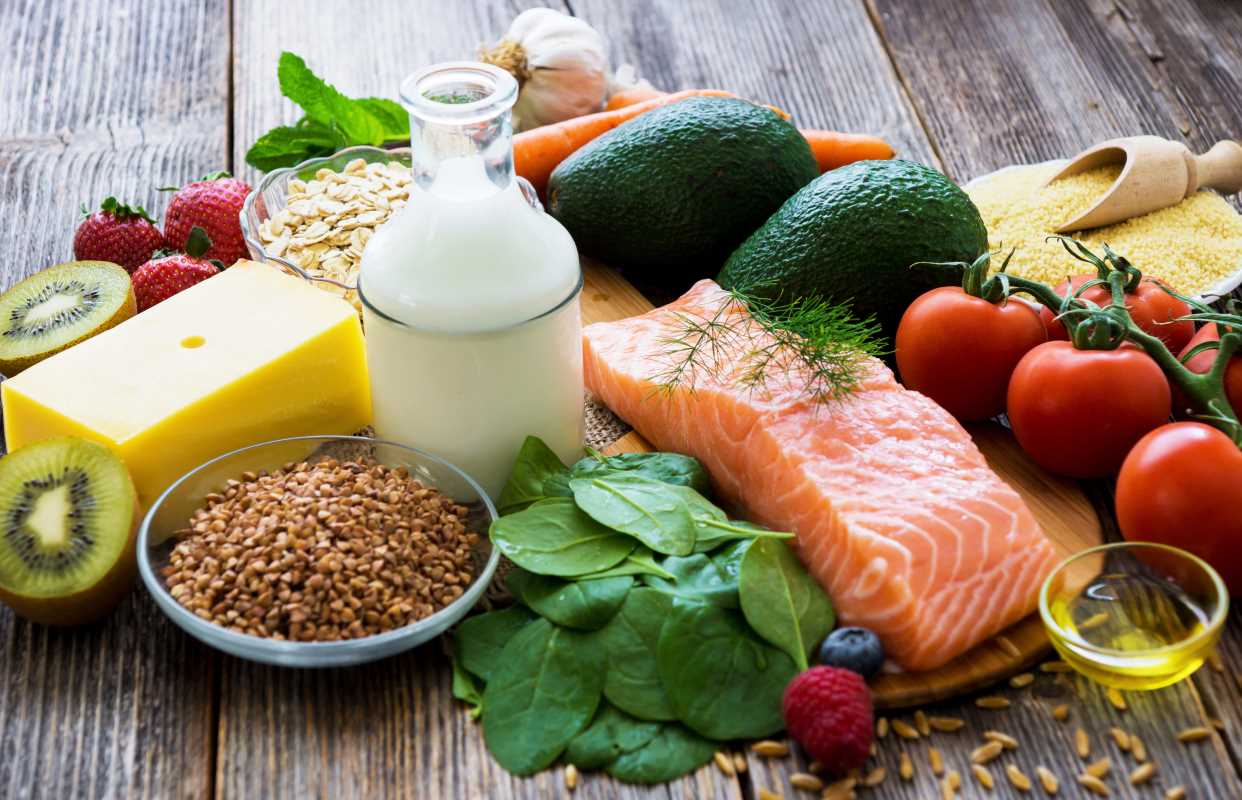Chronic pain affects millions of people worldwide, often resulting from conditions like arthritis, fibromyalgia, or autoimmune diseases. While medications can help manage pain, they may not address the root cause. Often, chronic pain is linked to inflammation—a response from the body’s immune system that, when prolonged, can harm tissues and trigger ongoing discomfort. The good news is that diet plays a powerful role in reducing inflammation. Consuming anti-inflammatory foods can help ease symptoms, promote better health, and even boost your energy levels. This guide will explore the connection between inflammation and chronic pain, highlight specific anti-inflammatory foods, and provide practical tips for incorporating them into your daily routine.
Understanding the Link Between Chronic Pain and Diet
Inflammation is a natural part of your body’s defense mechanism, helping to repair damage and fight off infections. However, when inflammation becomes chronic, it can cause pain, swelling, and stiffness that persist long after an injury or illness has healed. Over time, prolonged inflammation contributes to conditions like osteoarthritis, lower back pain, and even heart disease.
Research suggests that certain dietary choices may worsen inflammation. Highly processed foods, refined sugars, and unhealthy fats can trigger inflammatory responses in the body. On the flip side, the foods you eat can also act as natural medicine. Anti-inflammatory foods, rich in antioxidants and nutrients, can help regulate the immune system, neutralize inflammation, and reduce oxidative stress—a key factor in chronic pain development.
Now, let’s take a closer look at some of the most effective foods for reducing inflammation and managing chronic pain.
Anti-Inflammatory Foods to Include in Your Diet
1. Fatty Fish
Fatty fish like salmon, mackerel, and sardines stand out as nutritional powerhouses for fighting inflammation. They’re rich in omega-3 fatty acids, particularly EPA (eicosapentaenoic acid) and DHA (docosahexaenoic acid), which have been shown to reduce the production of inflammatory compounds in the body.
- Benefits for Pain Management: Omega-3s help lower levels of cytokines and prostaglandins—both of which contribute to inflammation and pain. Studies suggest that people with conditions like rheumatoid arthritis often experience reduced joint pain and stiffness when they consume omega-3 fatty acids regularly.
- How to Incorporate: Grill, bake, or pan-sear fatty fish and pair it with veggies for an easy, nutrient-packed dinner. For convenience, canned salmon or sardines make quick and healthy additions to salads, wraps, or simple grain bowls.
2. Leafy Greens
Leafy greens like spinach, kale, and Swiss chard are loaded with vitamins, minerals, and antioxidants that protect against inflammation.
- Benefits for Pain Management: These greens contain high levels of vitamin K, which helps reduce inflammation markers in the blood. Additionally, they provide magnesium and calcium, which are essential for muscle function and bone health—important for reducing discomfort related to arthritis or muscle pain.
- How to Incorporate: Add fresh spinach to smoothies, sauté kale as a side dish, or use Swiss chard in soups. Leafy greens can also act as a base for salads topped with other anti-inflammatory ingredients, like berries and nuts.
3. Berries
Strawberries, blueberries, raspberries, and blackberries pack a powerful punch of anti-inflammatory goodness. These fruits are rich in anthocyanins, a type of antioxidant responsible for their vivid coloring.
- Benefits for Pain Management: Anthocyanins help combat free radicals in the body, reducing oxidative stress and inflammation. Berries have also been linked to improved brain health and reduced joint pain, making them a great choice for anyone managing chronic conditions.
- How to Incorporate: Enjoy berries as a snack, mix them into oatmeal, or add them to a yogurt parfait. You can also include frozen berries in smoothies for a refreshing, inflammation-fighting boost.
4. Nuts and Seeds
Nuts like walnuts and almonds, as well as seeds like flaxseeds and chia seeds, are excellent sources of plant-based omega-3s, fiber, and antioxidants.
- Benefits for Pain Management: Walnuts, in particular, boast high levels of alpha-linolenic acid (ALA), an omega-3 fatty acid that reduces inflammation in the joints and blood vessels. Meanwhile, almonds provide vitamin E, which protects tissues from oxidative damage.
- How to Incorporate: Snack on a handful of nuts during the day, sprinkle flaxseeds over cereal, or incorporate chia seeds into overnight oats. Nut butters—like almond or walnut butter—are great for pairing with fruits or spreading on whole-grain toast.
5. Olive Oil
Extra-virgin olive oil is a key ingredient in the Mediterranean diet, hailed for its numerous health benefits and anti-inflammatory properties.
- Benefits for Pain Management: Olive oil contains a compound called oleocanthal, which has natural anti-inflammatory effects similar to ibuprofen. Regular consumption can benefit conditions like osteoarthritis by reducing joint pain and stiffness.
- How to Incorporate: Use olive oil as the primary fat in your cooking, whether for roasting vegetables or sautéing proteins. Drizzle it over salads or use it as the base for homemade dressings and dips.
Tips for Building an Anti-Inflammatory Diet
Creating a balanced anti-inflammatory diet doesn’t have to be complicated. Small changes in your daily habits can make a big difference in managing chronic pain.
- Prioritize Whole Foods: Focus on foods in their natural state, such as fruits, vegetables, whole grains, lean proteins, and healthy fats. Minimize processed foods, which often contain inflammatory ingredients like refined sugars, trans fats, and artificial additives.
- Eat the Rainbow: Different colored fruits and vegetables contain unique antioxidants and nutrients. Aim to include a variety of colors on your plate to maximize their health benefits.
- Plan Balanced Meals: Combine anti-inflammatory foods with high-quality proteins and complex carbohydrates for sustained energy. For example, a salmon salad with leafy greens, quinoa, and a berry vinaigrette offers a perfect blend of flavors and nutrition.
- Experiment with Herbs and Spices: Spices like turmeric and ginger are known for their anti-inflammatory properties. Add turmeric to soups, curries, or scrambled eggs, and use fresh ginger in teas, stir-fries, or baked goods.
- Stay Hydrated: Proper hydration helps the body flush out toxins and supports joint health. Opt for water or anti-inflammatory beverages like green tea, which contains compounds called catechins that reduce inflammation.
- Limit Pro-Inflammatory Foods: Avoid items that can trigger inflammation, such as sugary snacks, fried foods, and refined carbs. Instead, replace them with healthier alternatives, like dark chocolate for sweets or roasted veggies for a savory crunch.
Consult a Healthcare Provider
Before making any major dietary changes, consult your healthcare provider, especially if you have pre-existing conditions like diabetes or cardiovascular disease. They can ensure your diet aligns with your overall health needs and may recommend additional strategies, such as supplements or specialized meal plans.
Chronic pain can feel overwhelming, but an anti-inflammatory diet offers a natural way to help manage symptoms. By incorporating fatty fish, leafy greens, berries, nuts, olive oil, and other nutrient-dense foods, you can reduce inflammation and support your overall well-being. Building an anti-inflammatory diet is not about perfection but progress. Over time, these small changes can lead to significant improvements in your comfort and quality of life. Remember to combine dietary adjustments with regular exercise, stress management, and medical care for a holistic approach to pain management.
 (Image via
(Image via





